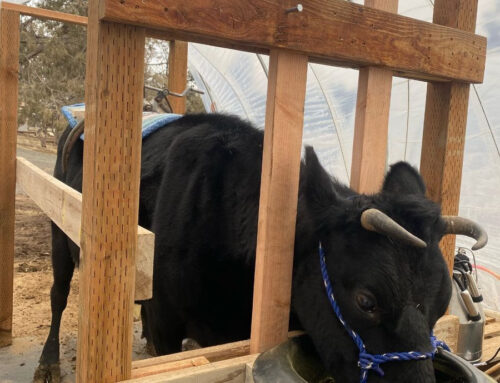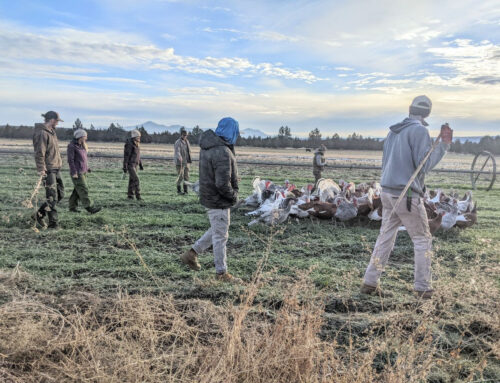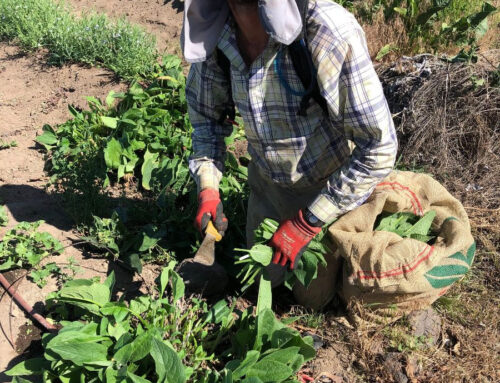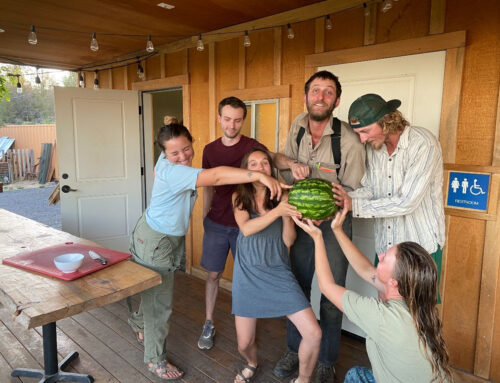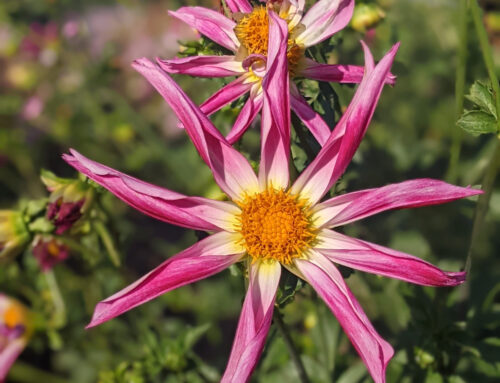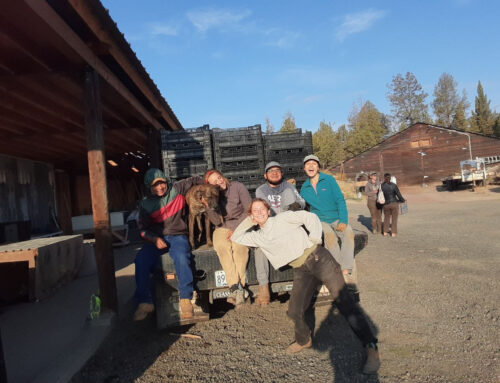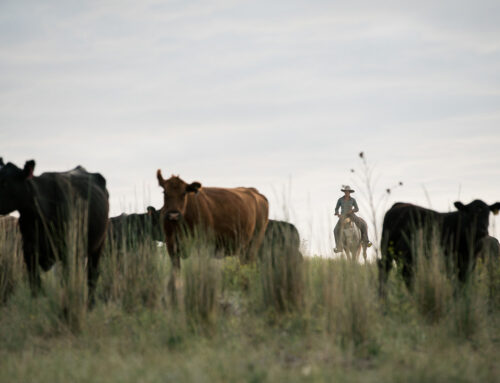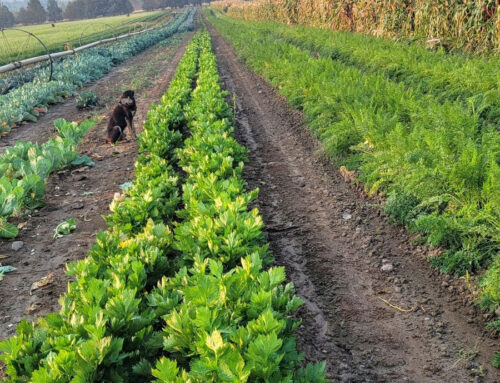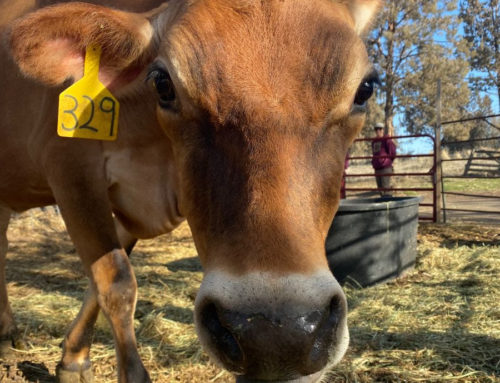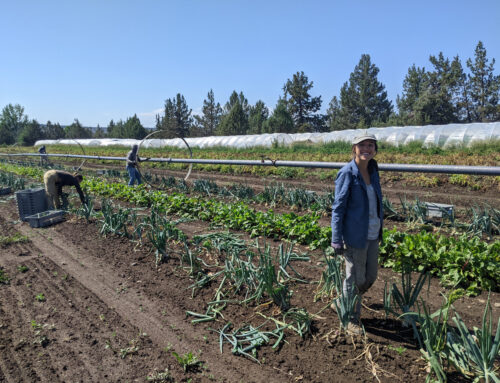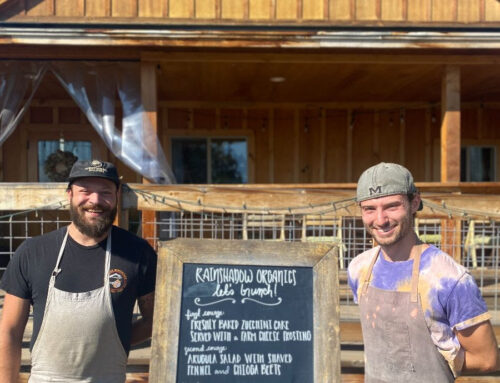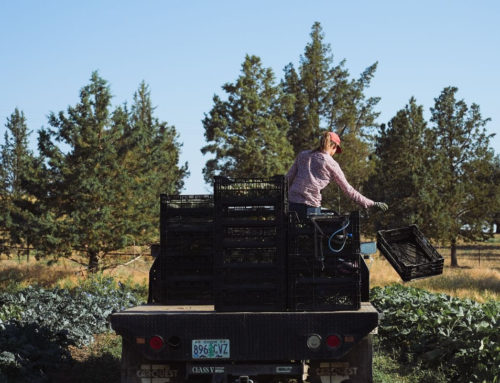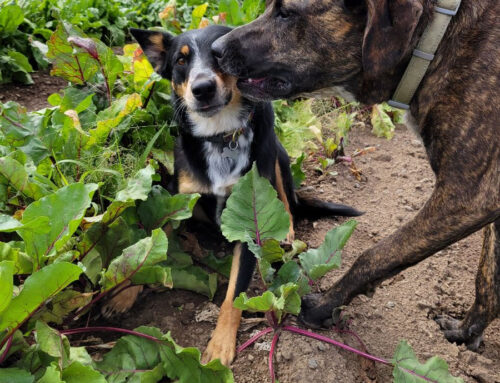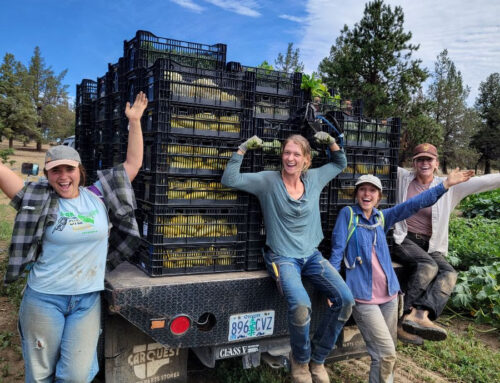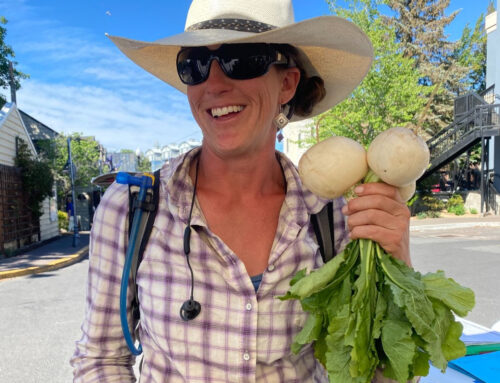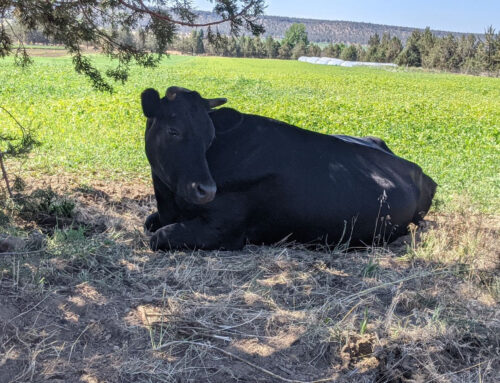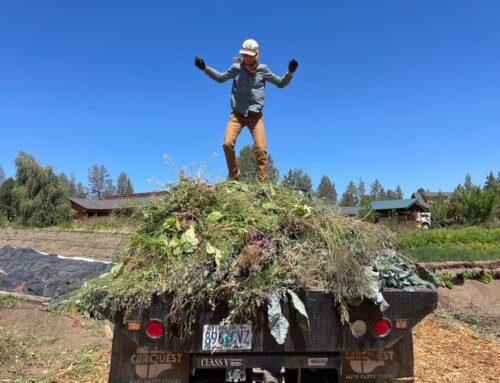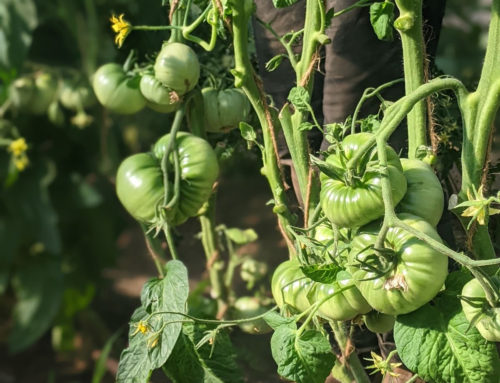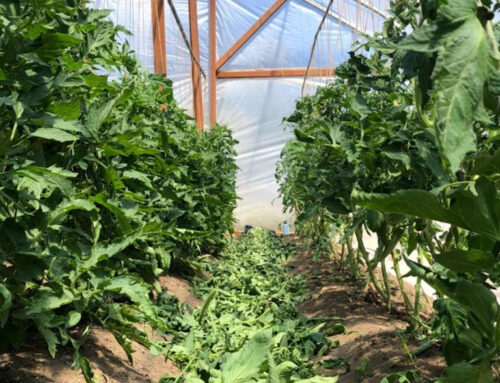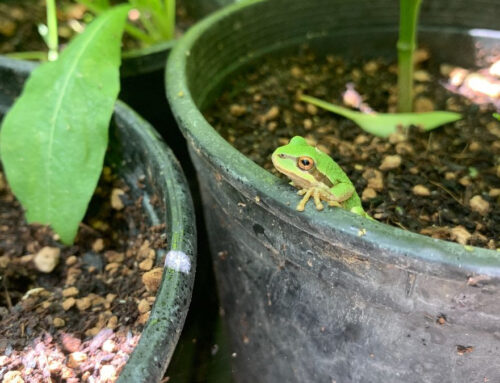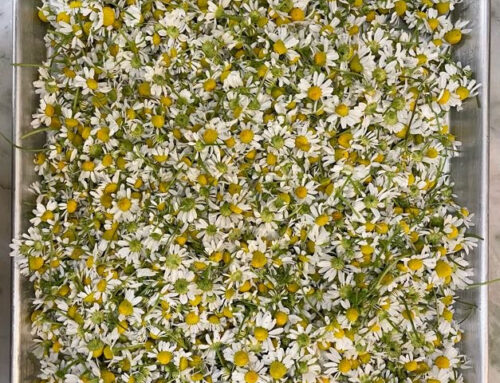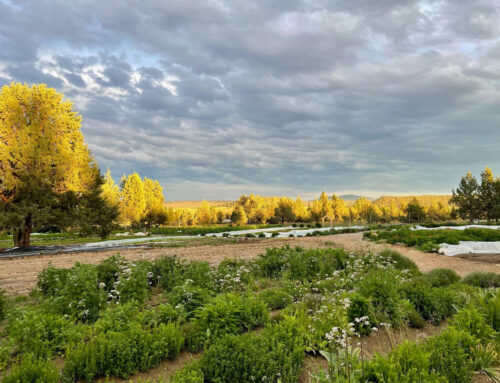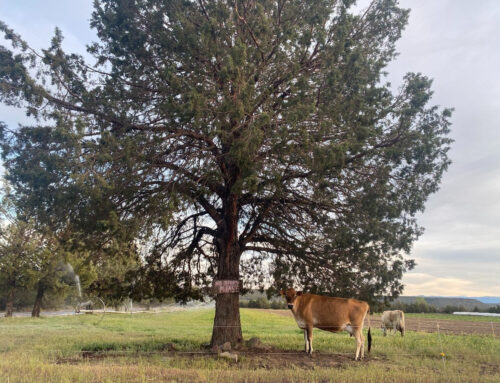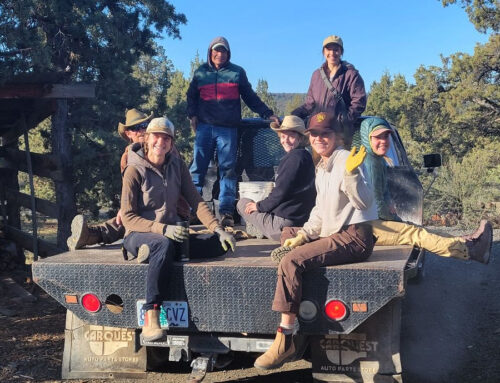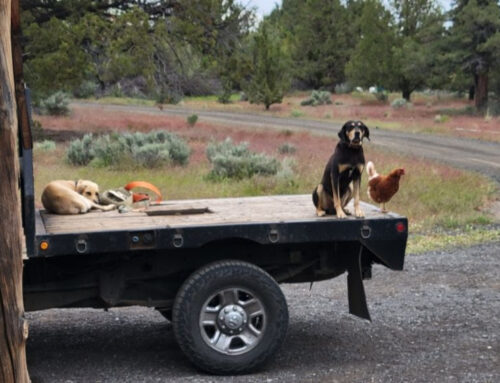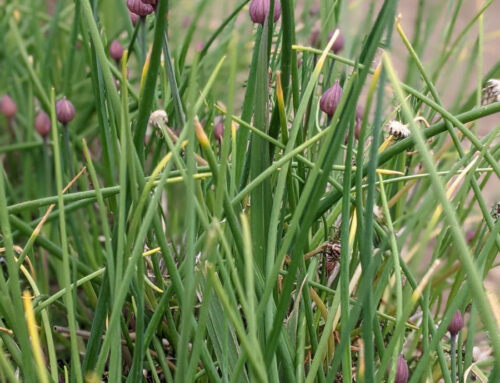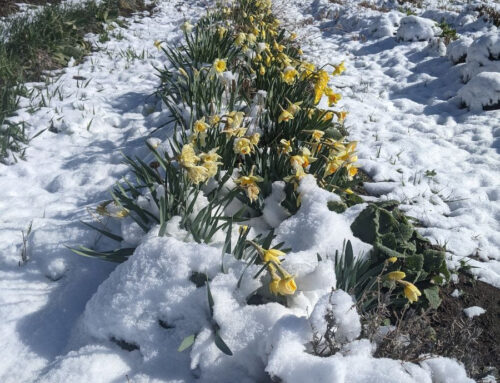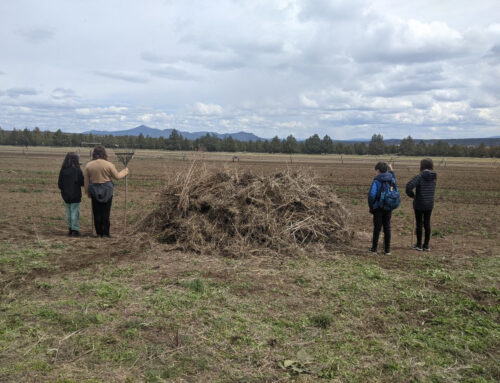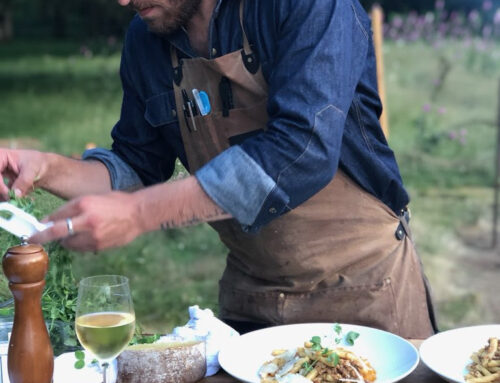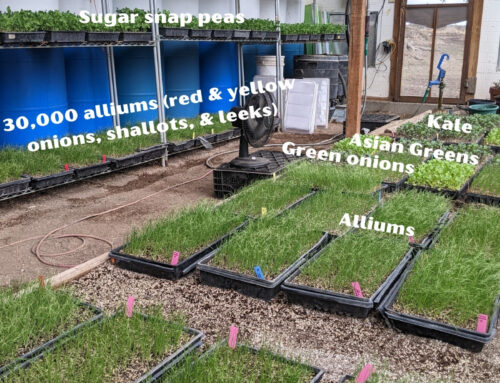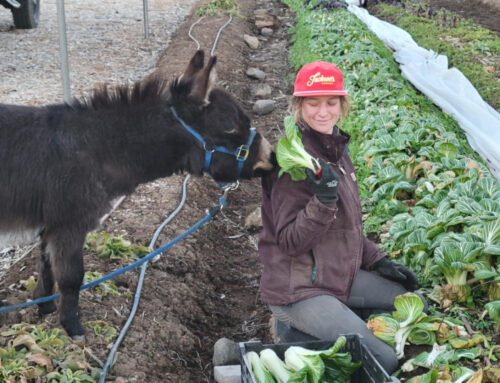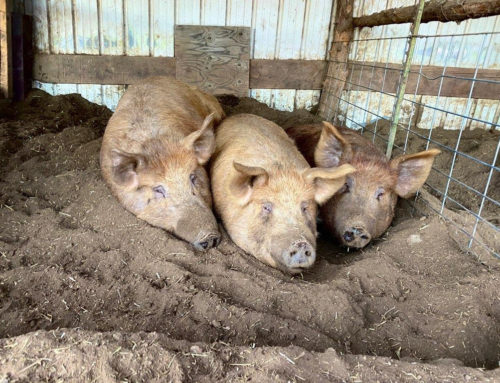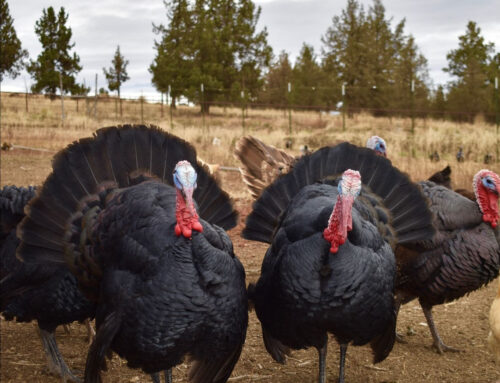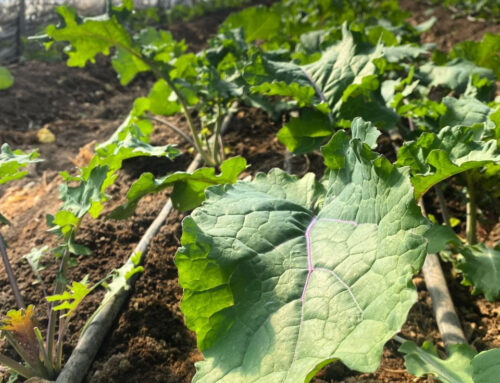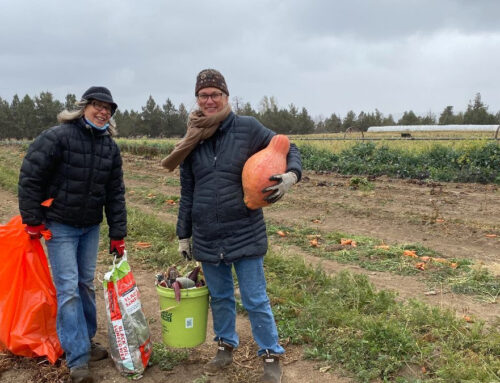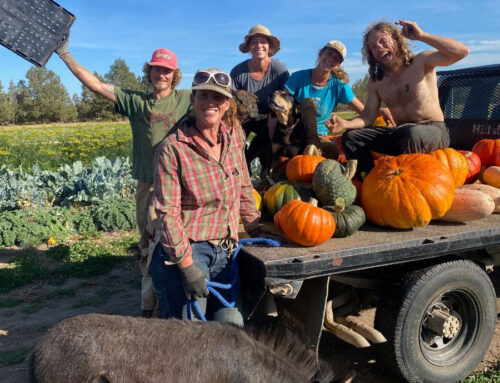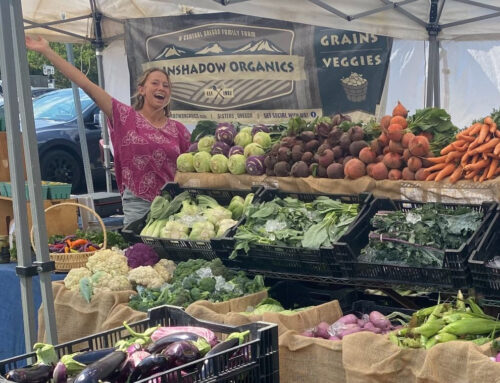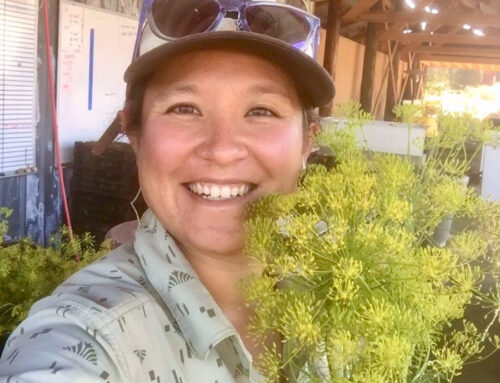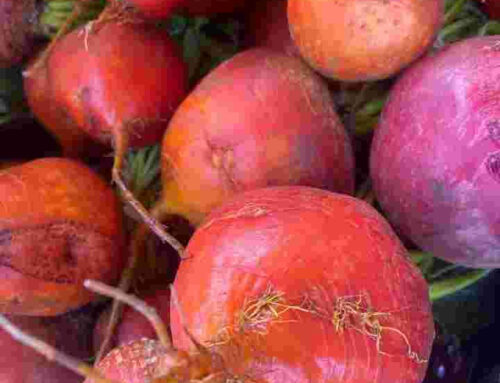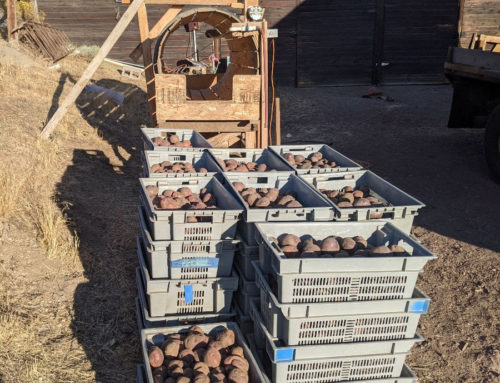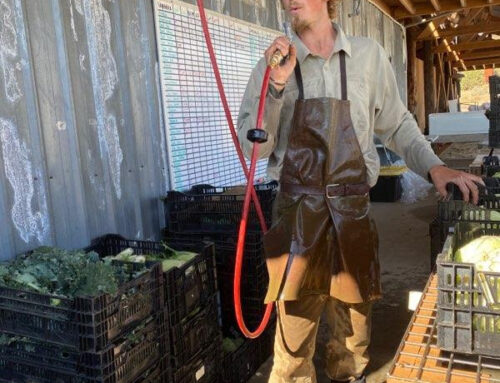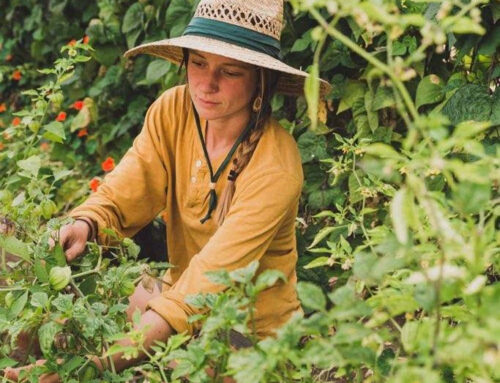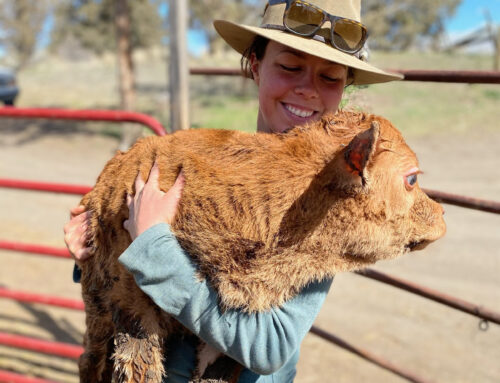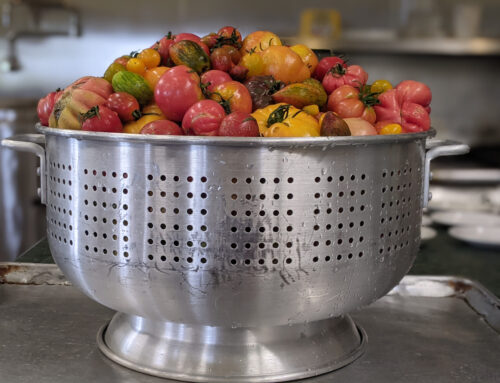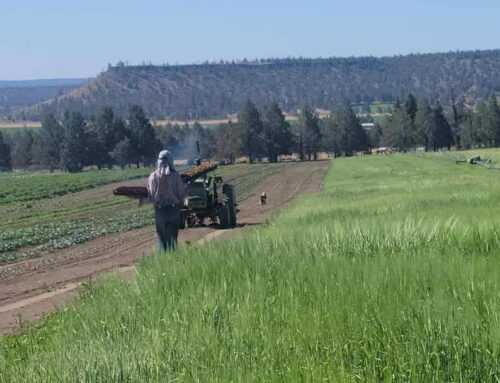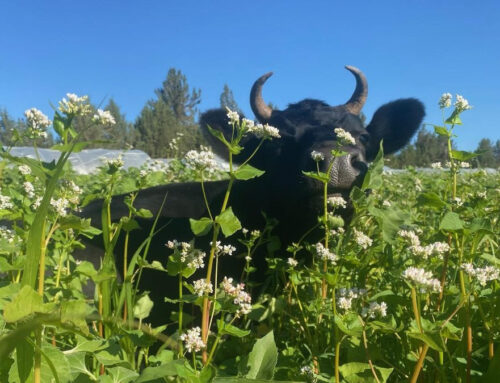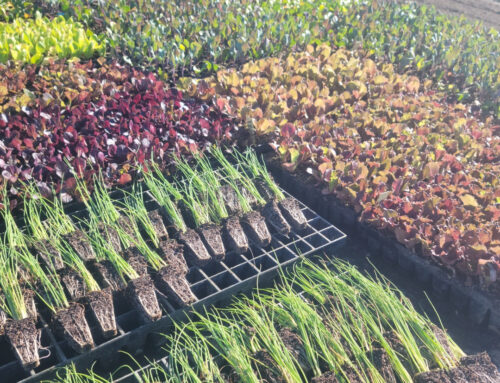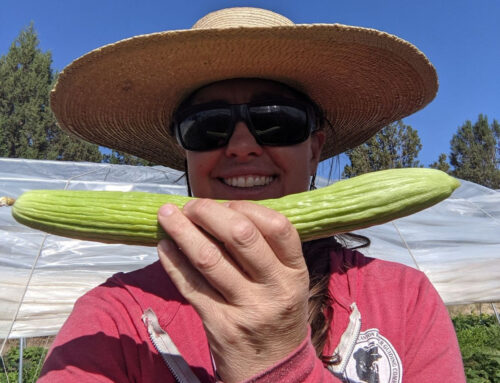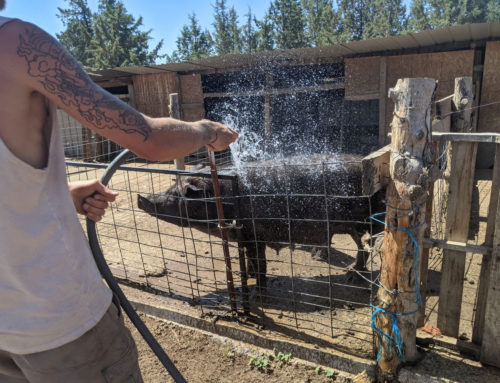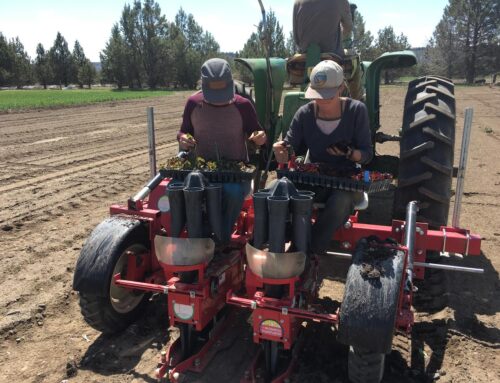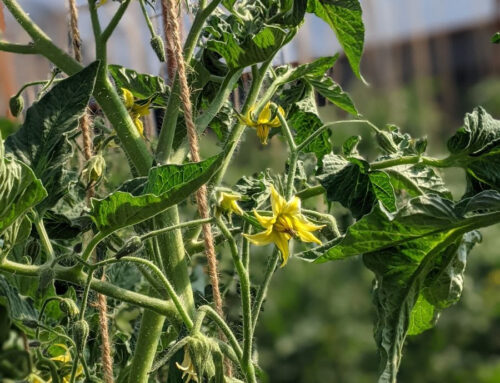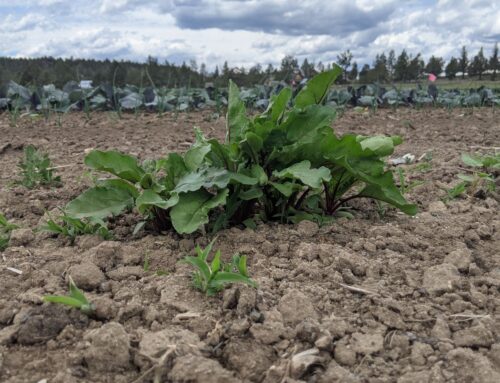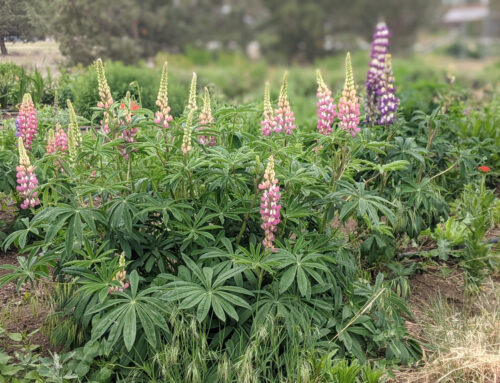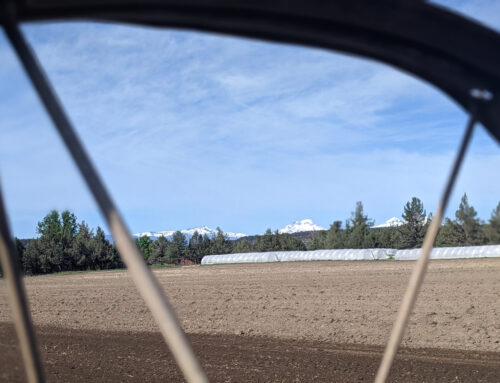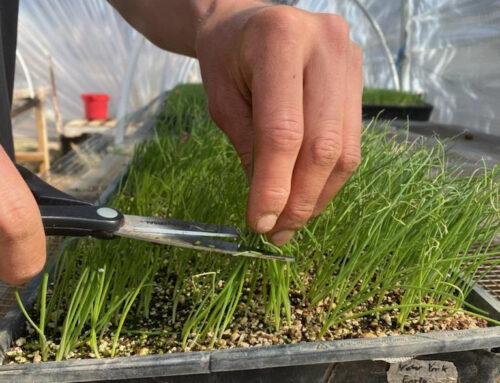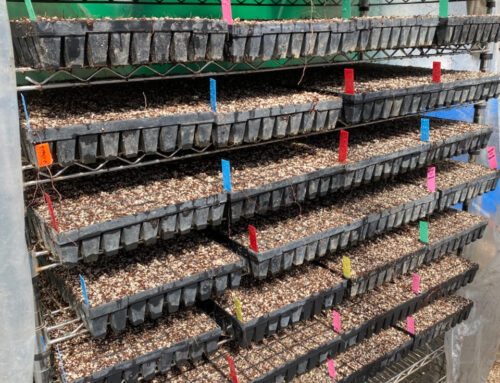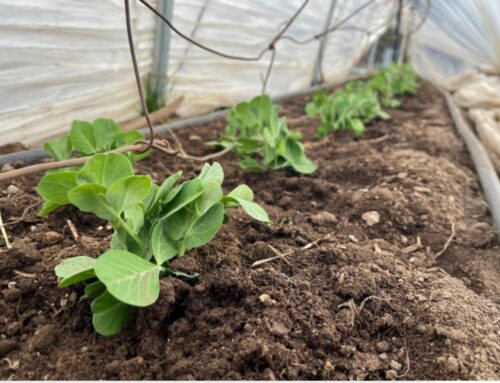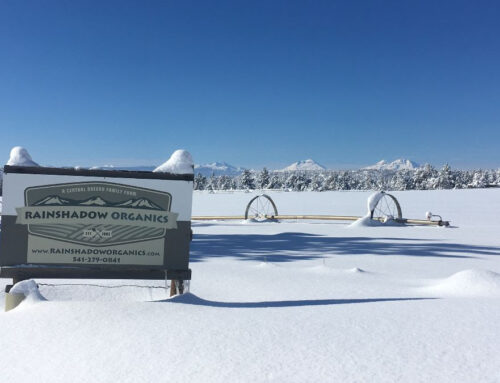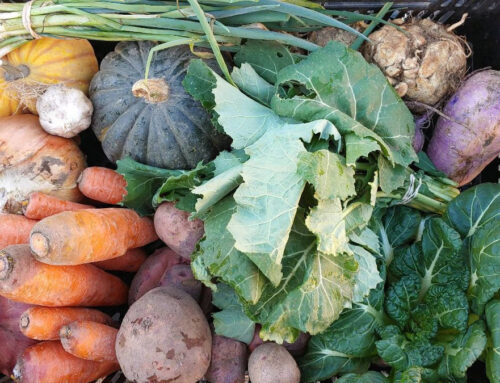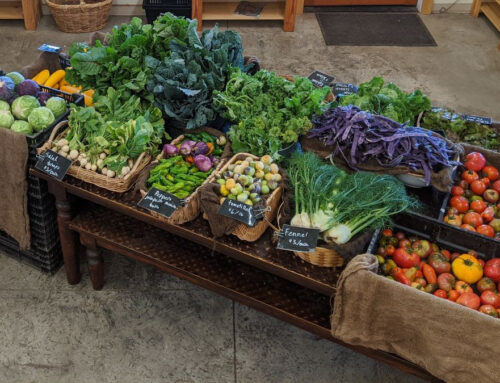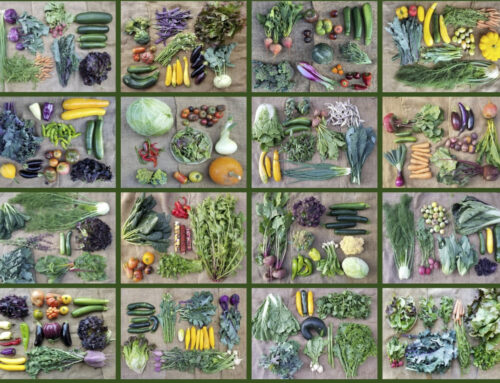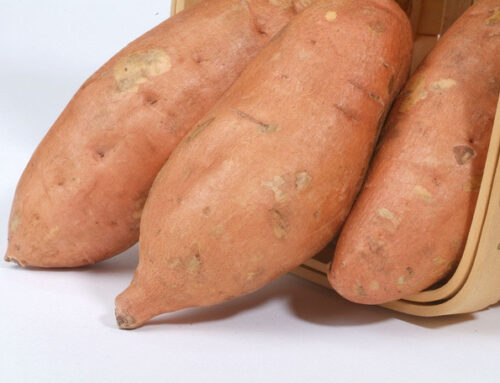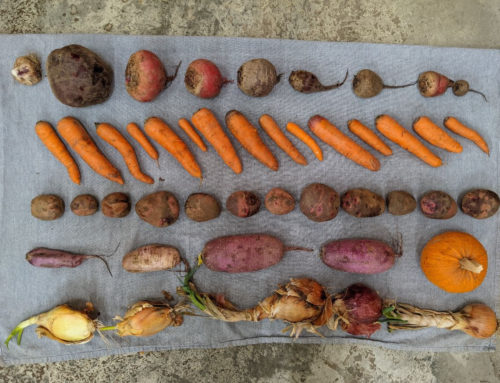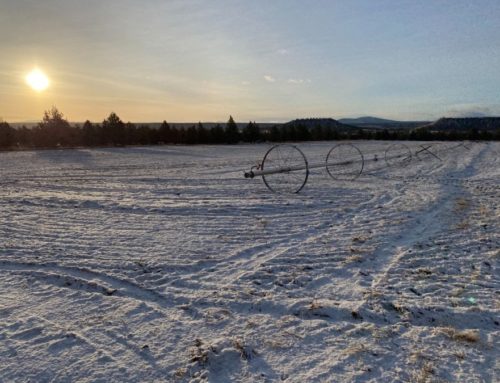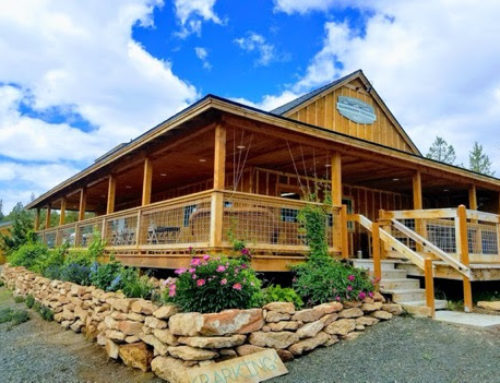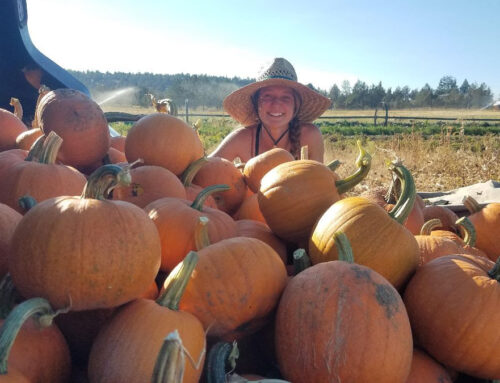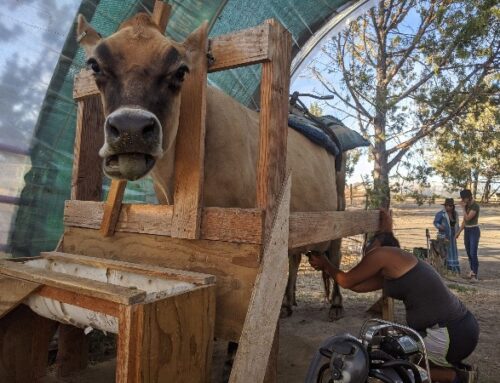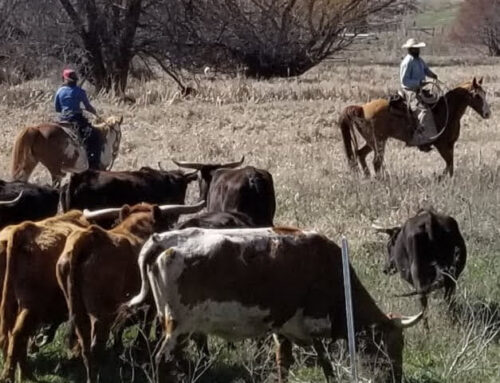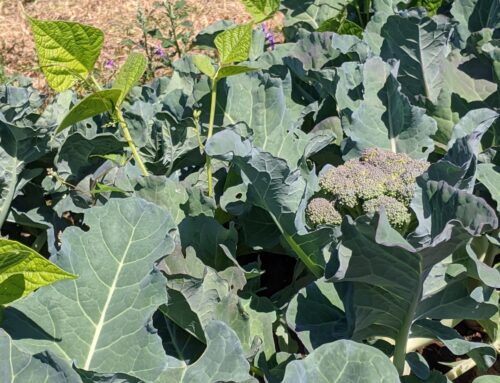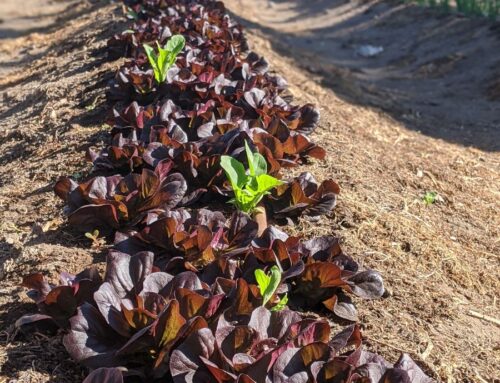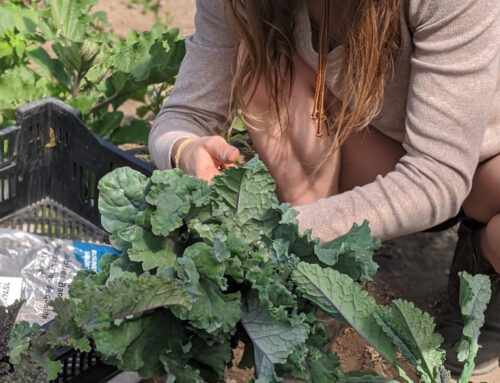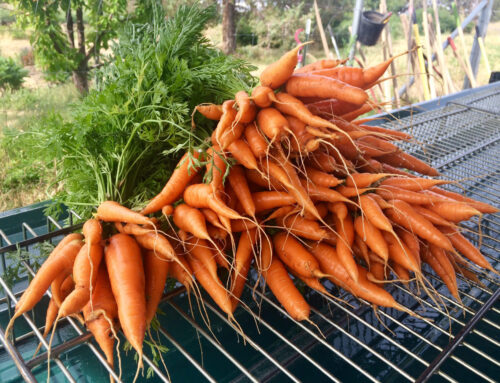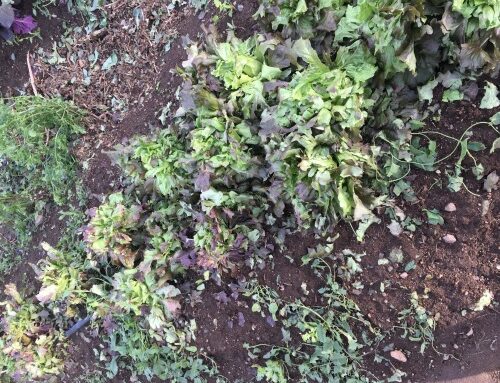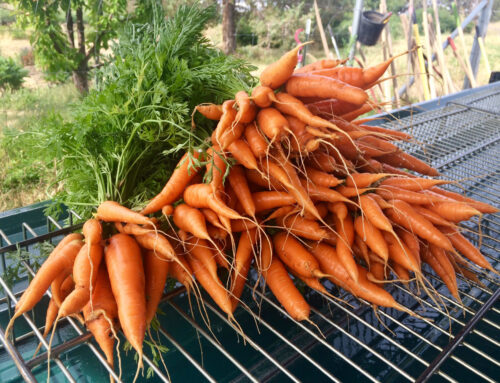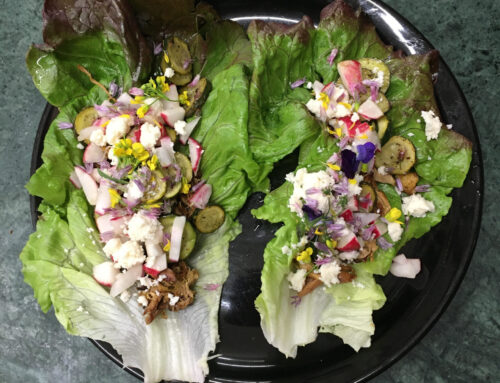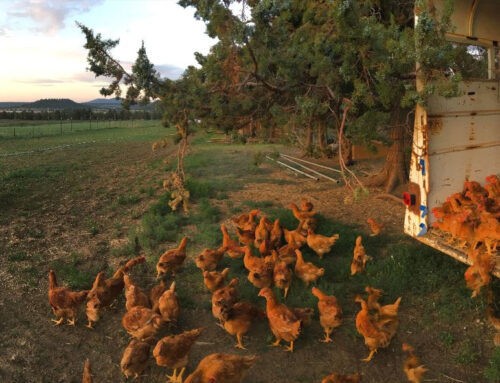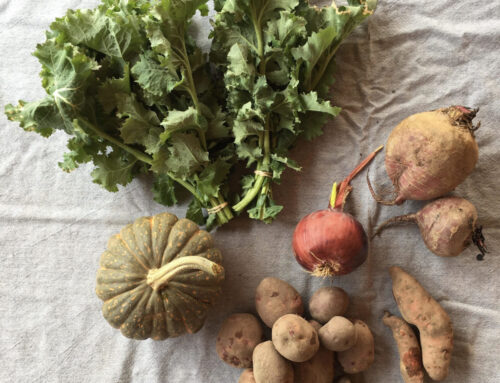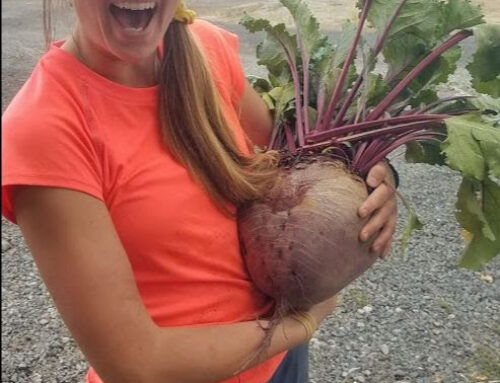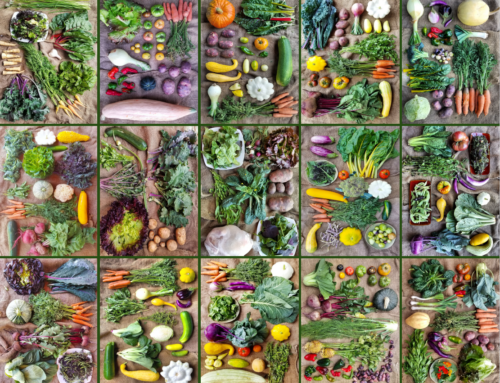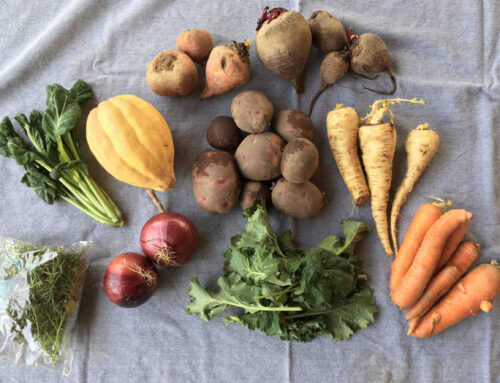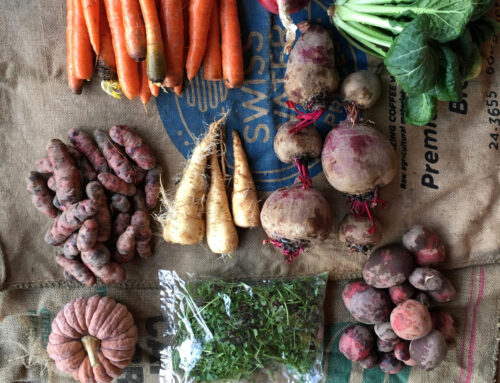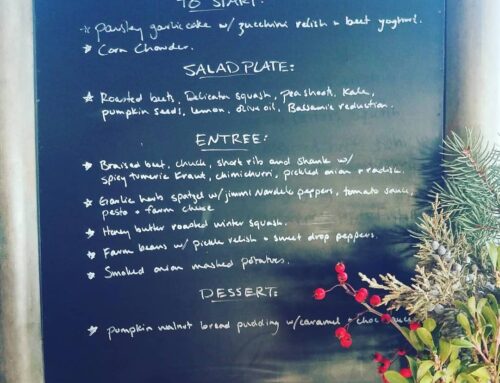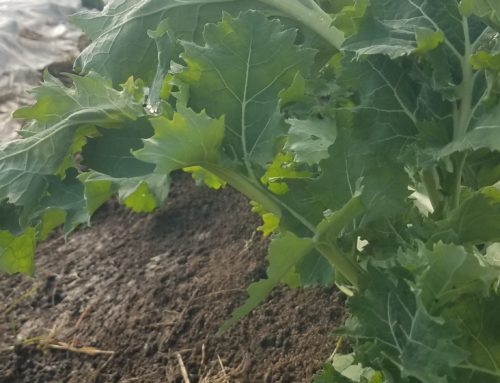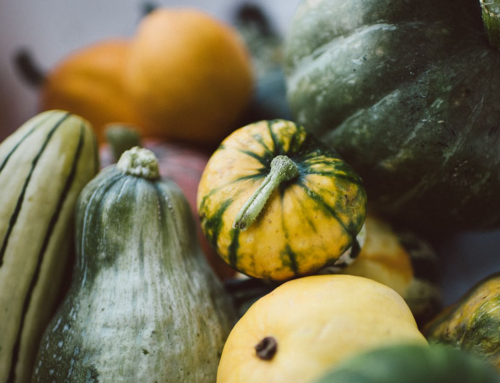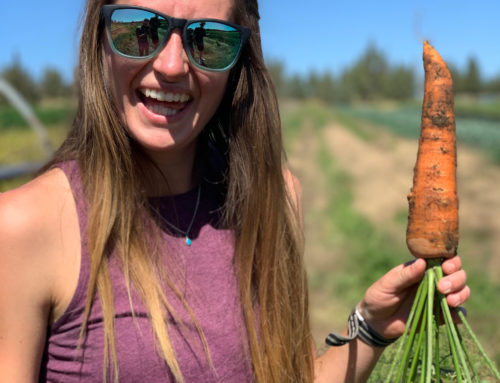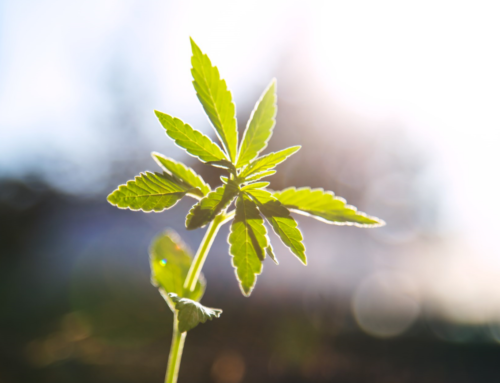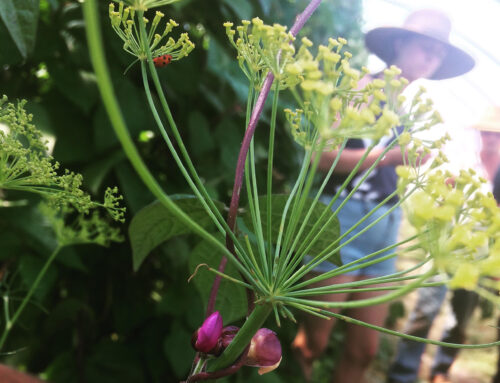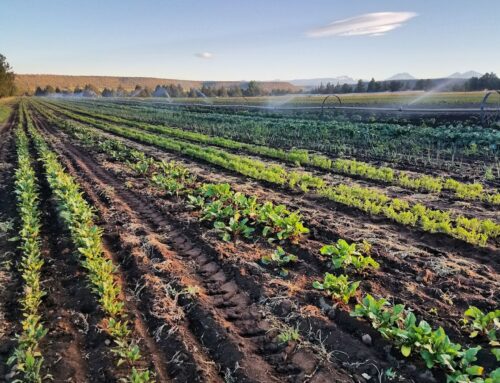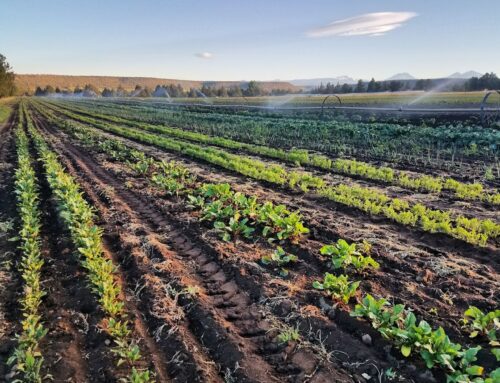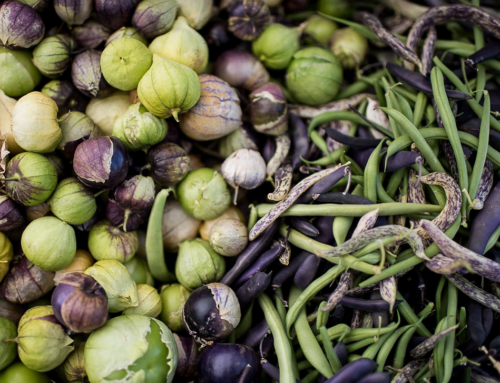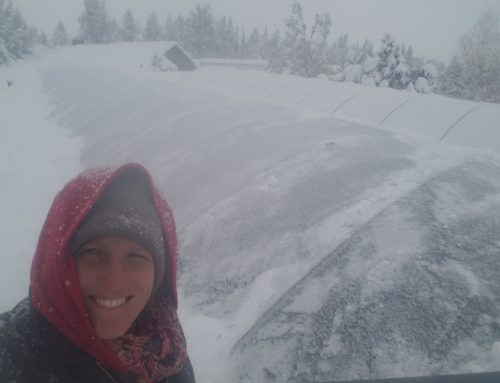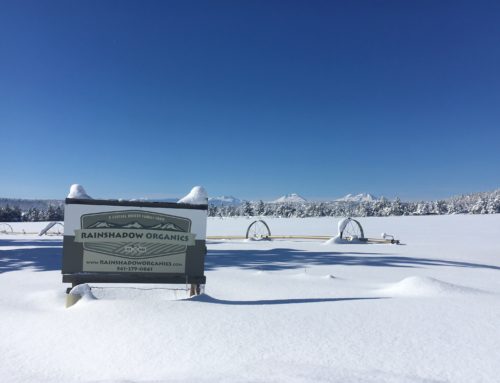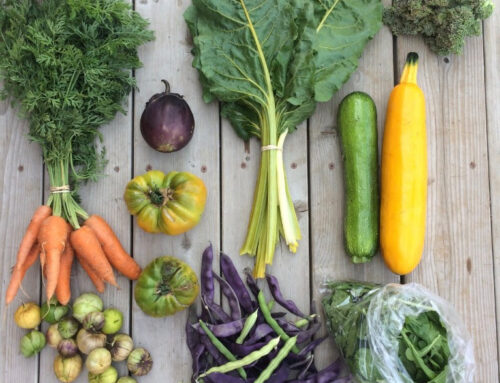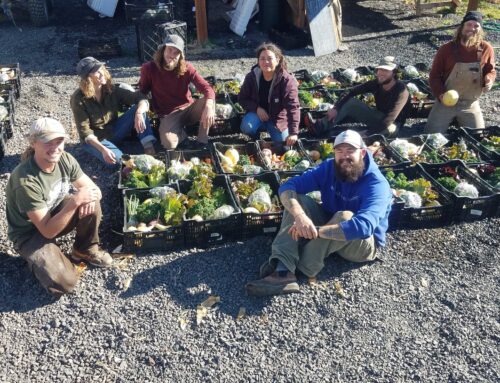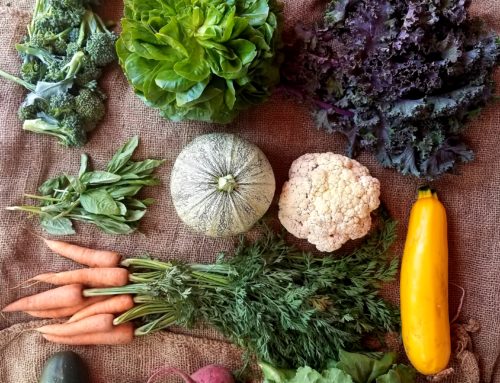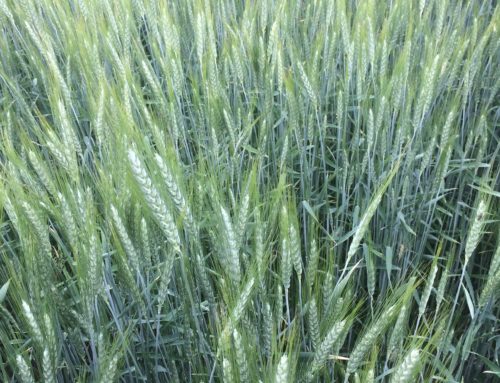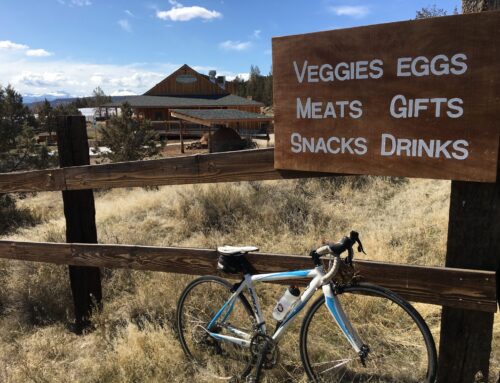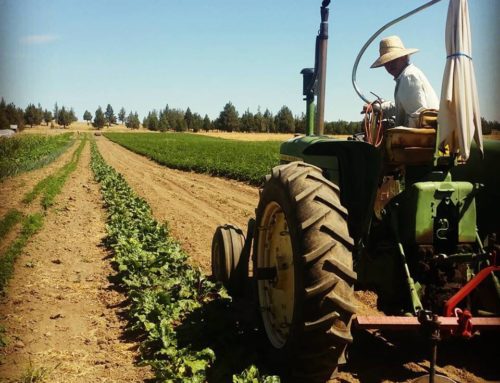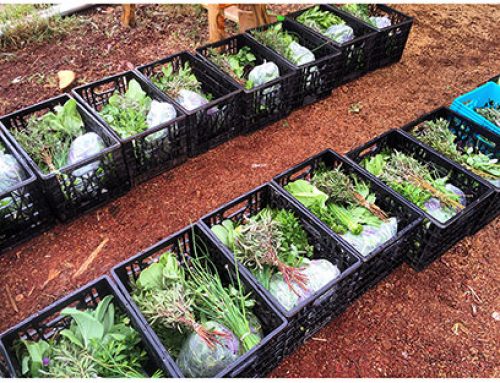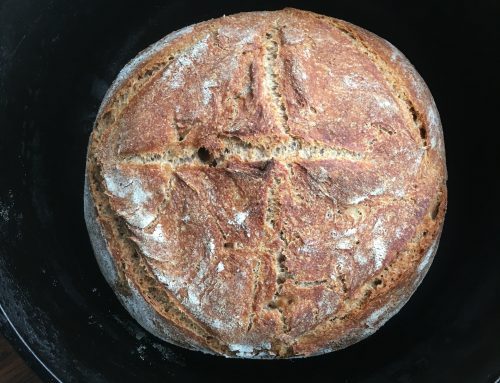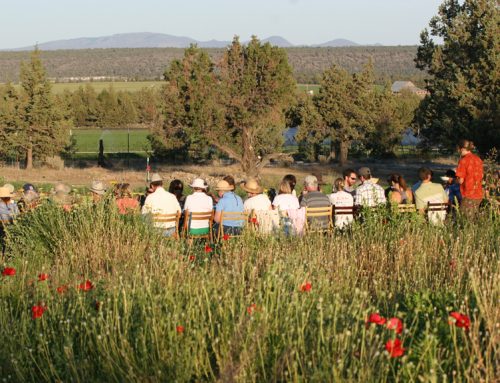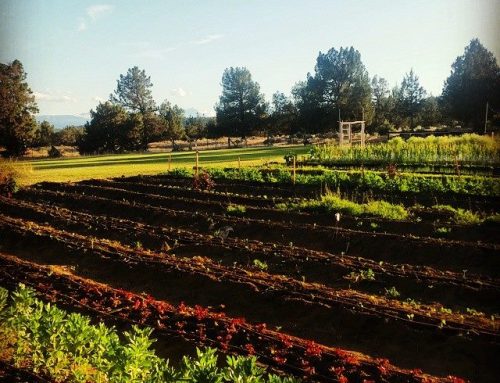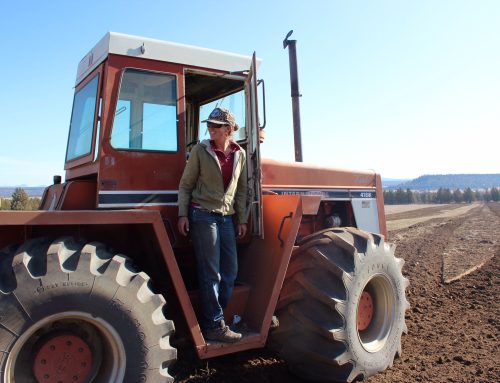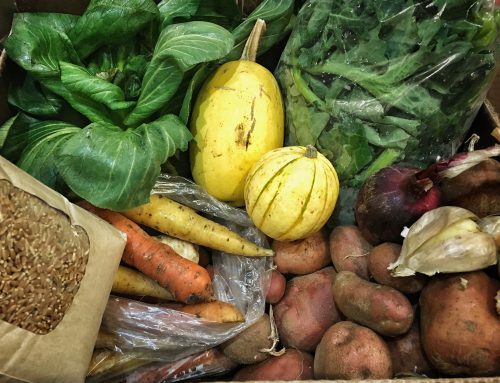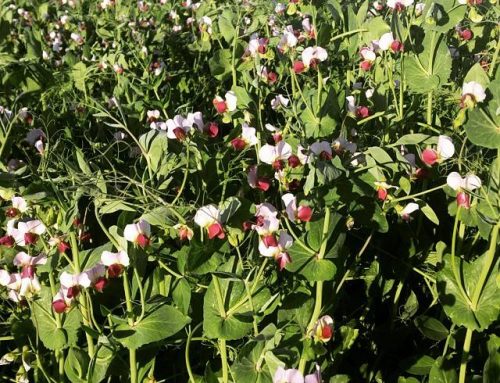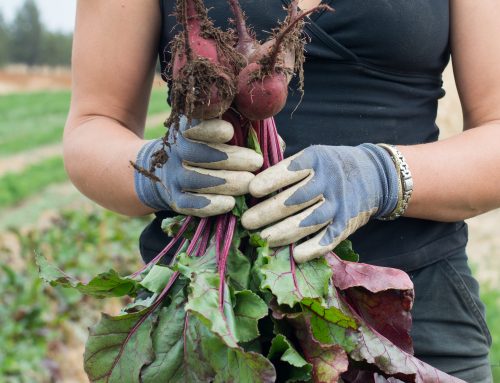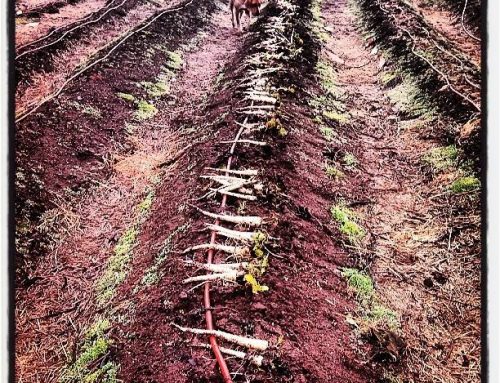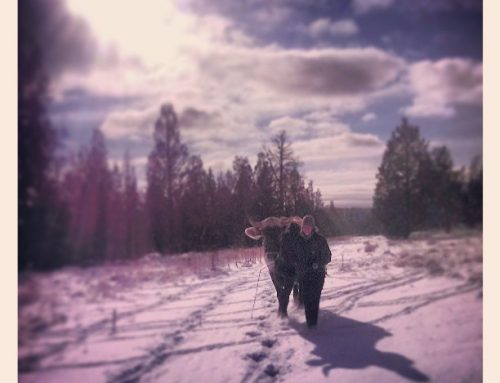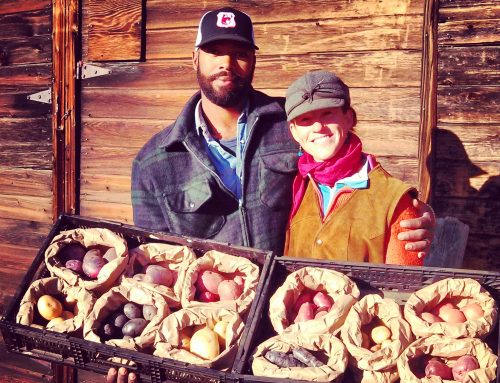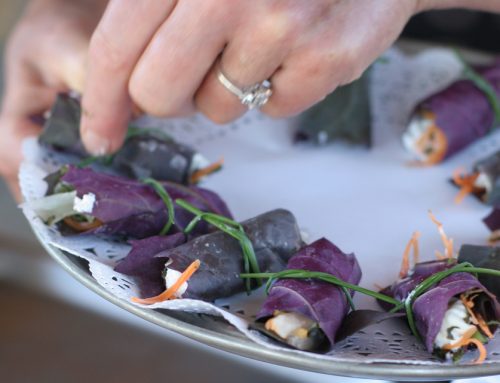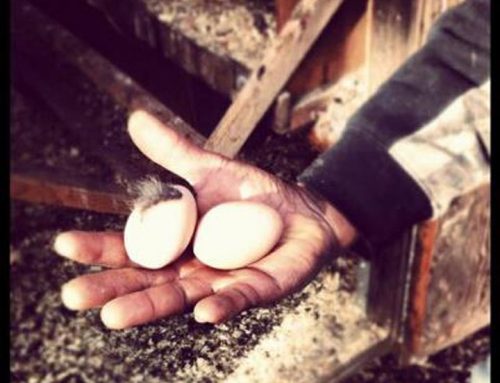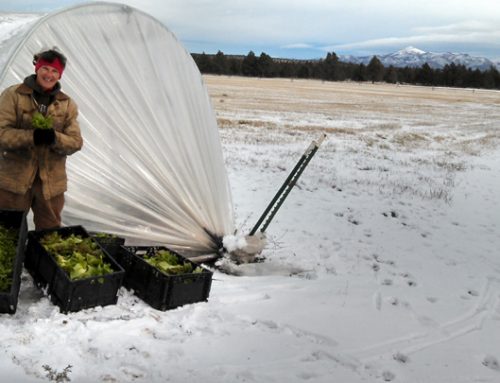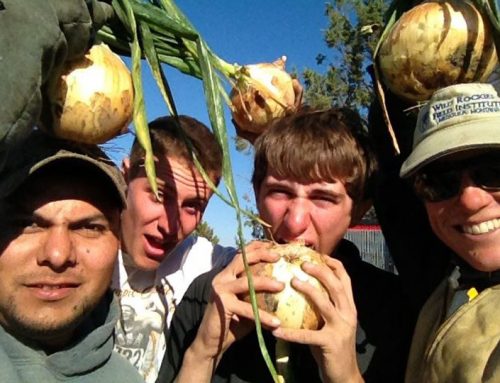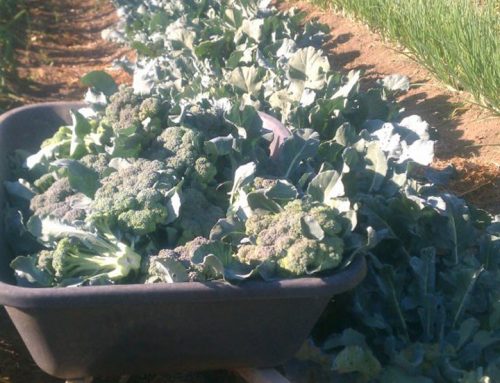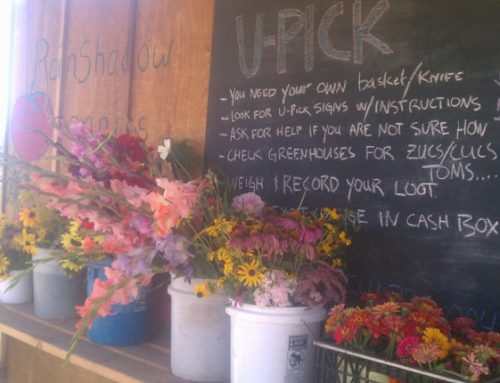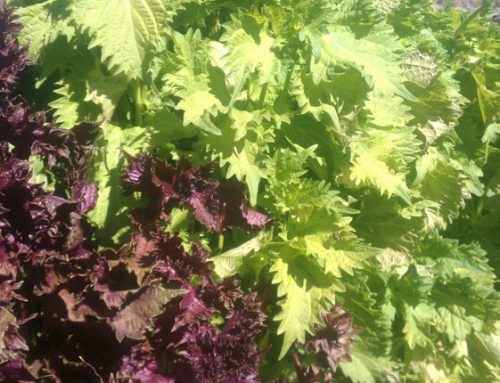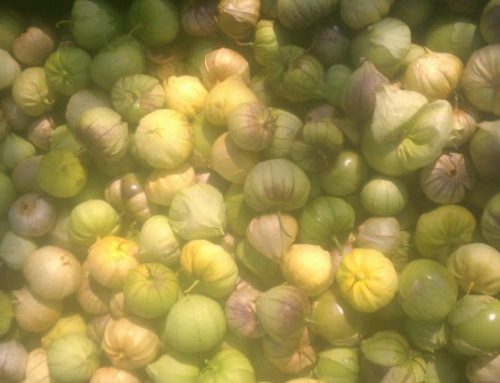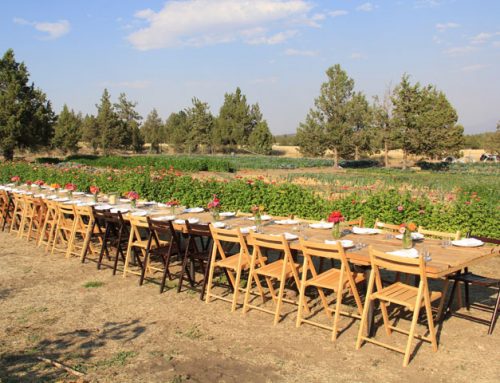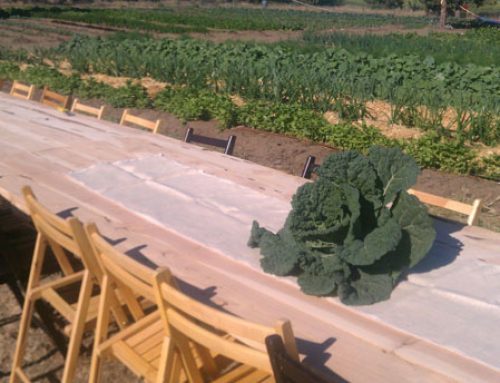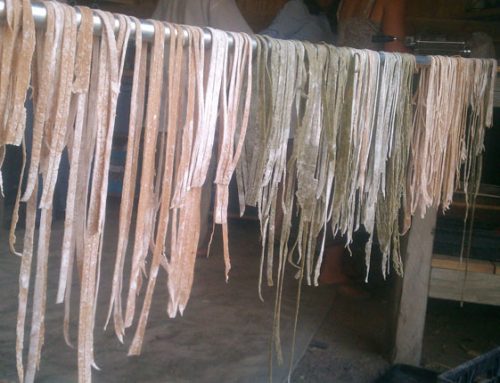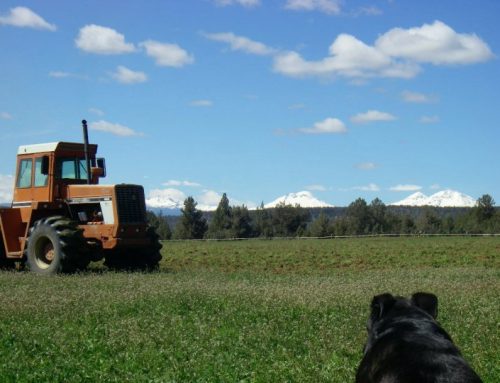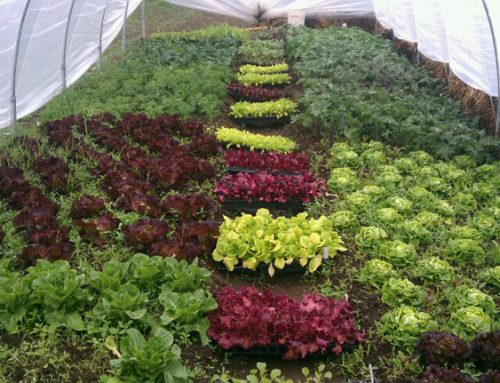
Every other week, the farmers will write the Sunday CSA letter. This will bring a different tone and story to your inbox and come even closer to telling the full story of the diversity that is Rainshadow Organics.
Today’s newsletter is written by:

|
|
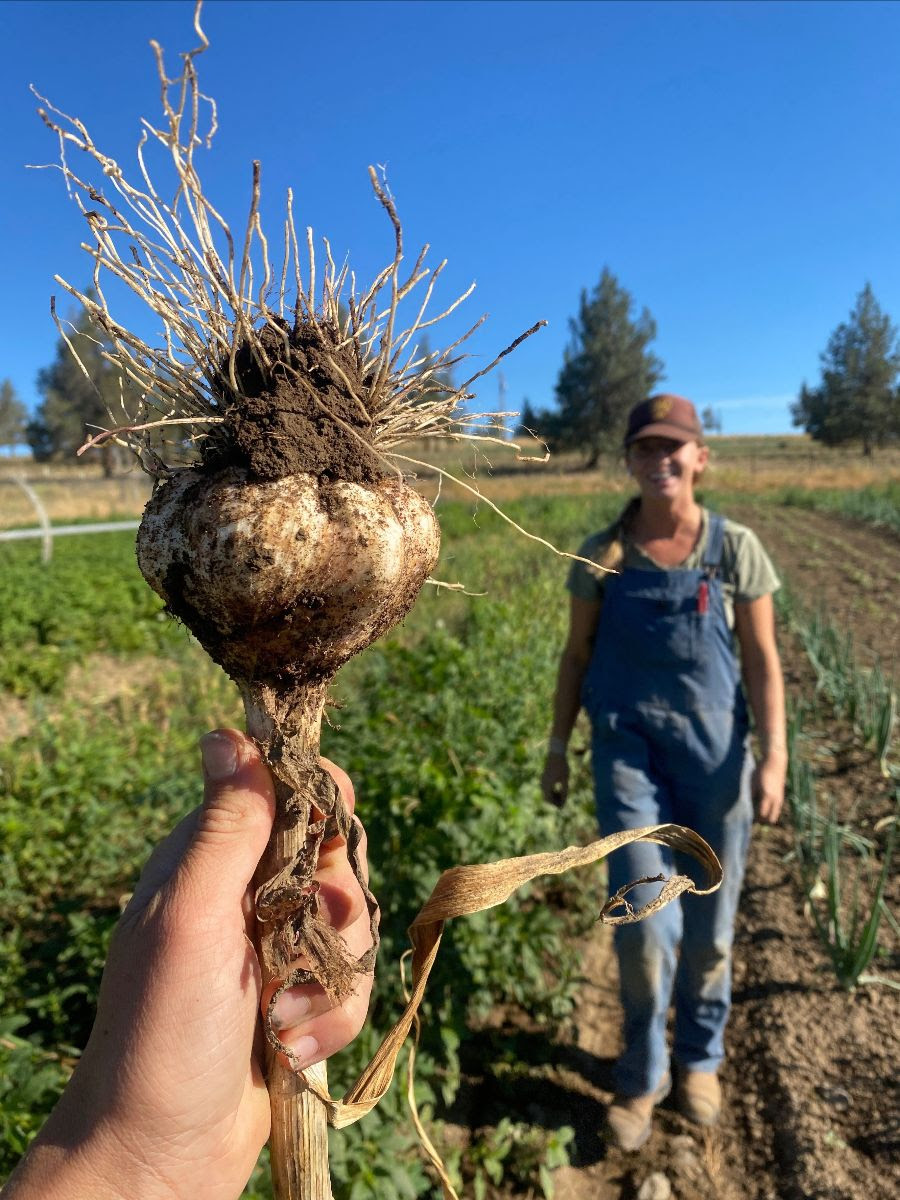
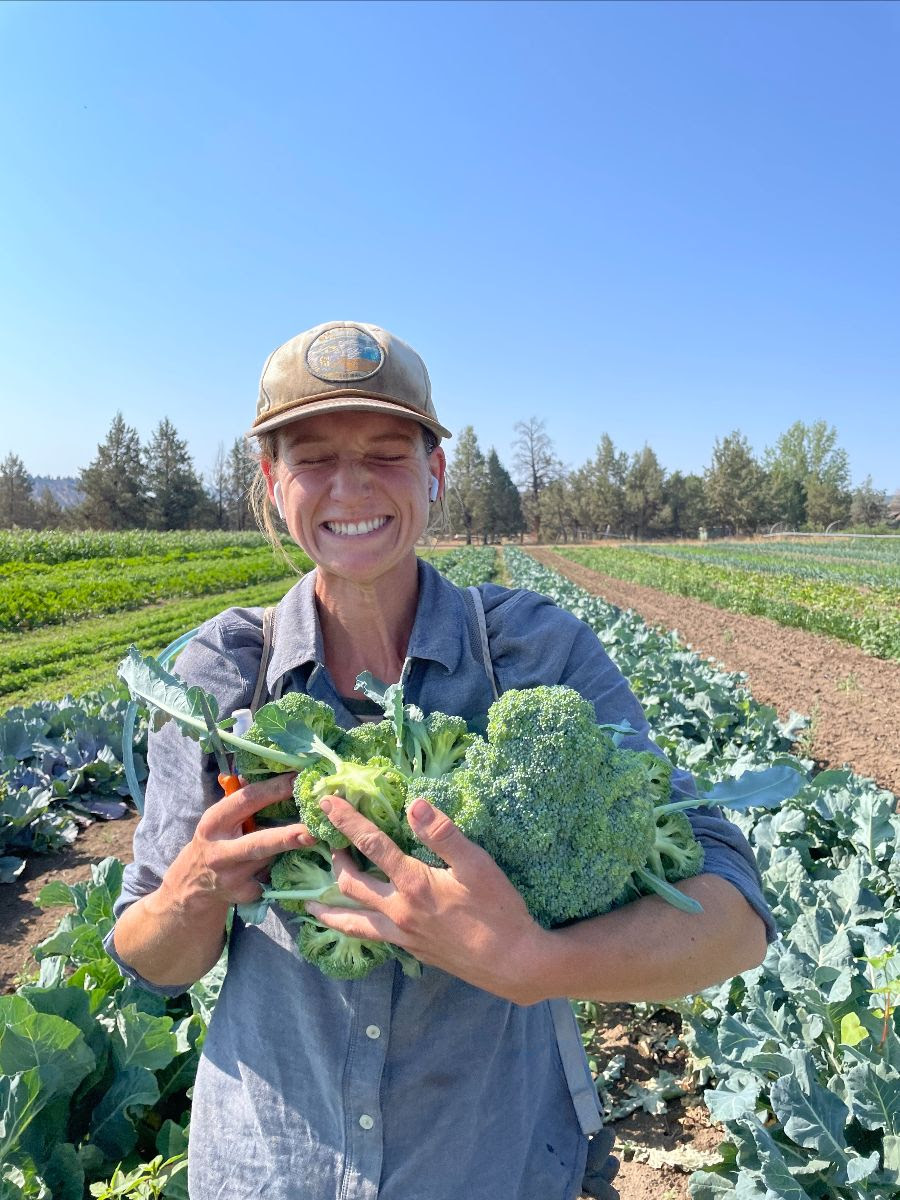
|
photo credit: Natalie Leder
|
The sweltering heat of the last week inspired us to start our days before the crack of dawn at 5 am, so we’ve had the pleasure of watching the farm ecosystem come to life each morning! There’s something truly special about waking up before the first light. You get to feel the whole world sit still and then erupt into life. We began our work in near darkness, just before the first hints of light peaked over the horizon. As the truck rolled into the field, farmers jostling on the truck bed, we caught the first glimpses of our plants, illuminated in the soft light. The sun rose slowly over the cliffs and spires of Smith Rock as we worked, kissing the leaves of our plants, awakening them for another day of photosynthesis and growth.
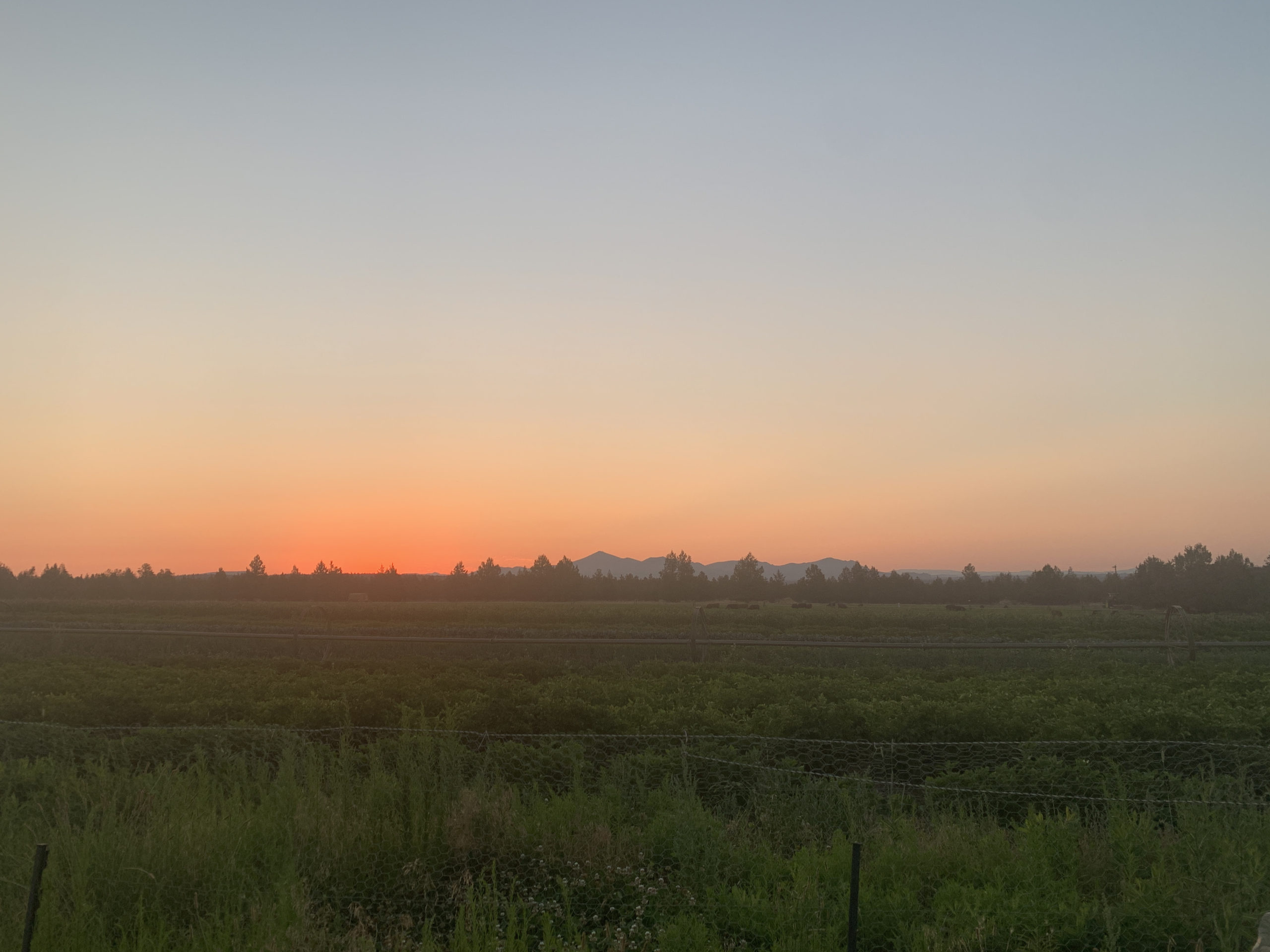
|
photo credit: Caroline Crews
|
Each of these early mornings was peaceful and beautiful, and our farmers agreed that this early hour was a special time to be out on the farm. One morning in particular stood out to me. We started this day in our 25-acre vegetable field harvesting kale. We like to harvest our greens first thing in the morning to protect them from the scorching sun, which can easily wilt a leafy green. At this point in the season, we spend the lion’s share of our time harvesting food from the plants we’ve been nurturing. We love growing good food to feed people, so there is little more satisfying than piling stacks of crates full of fresh, delicious produce onto the truck and sending it on its journey to your plates. But still, after spending so much time keeping a plant alive, supported, tended, fed, watered, and weeded, it is bittersweet to end it all with a single pluck or pull from the Earth.
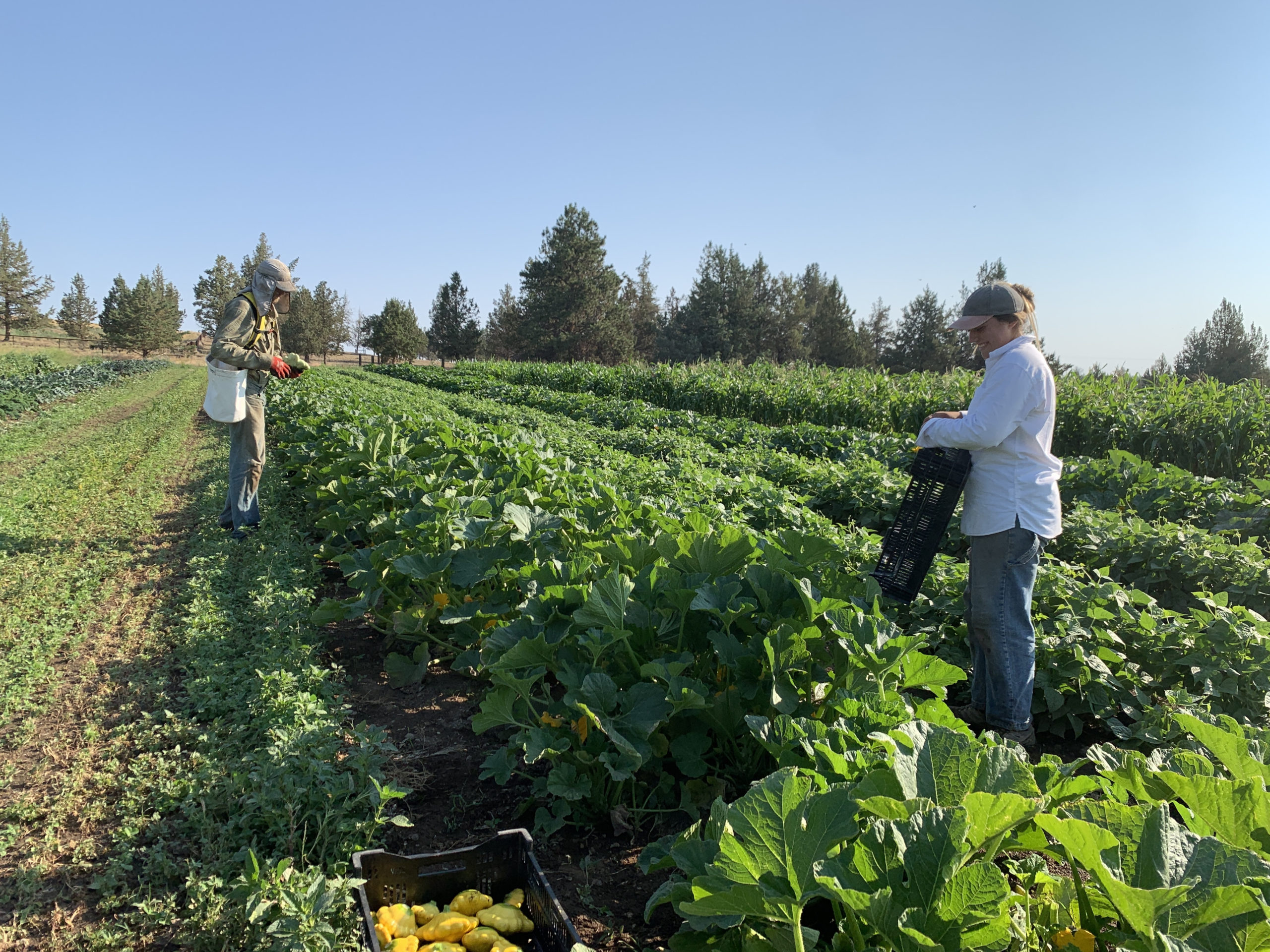
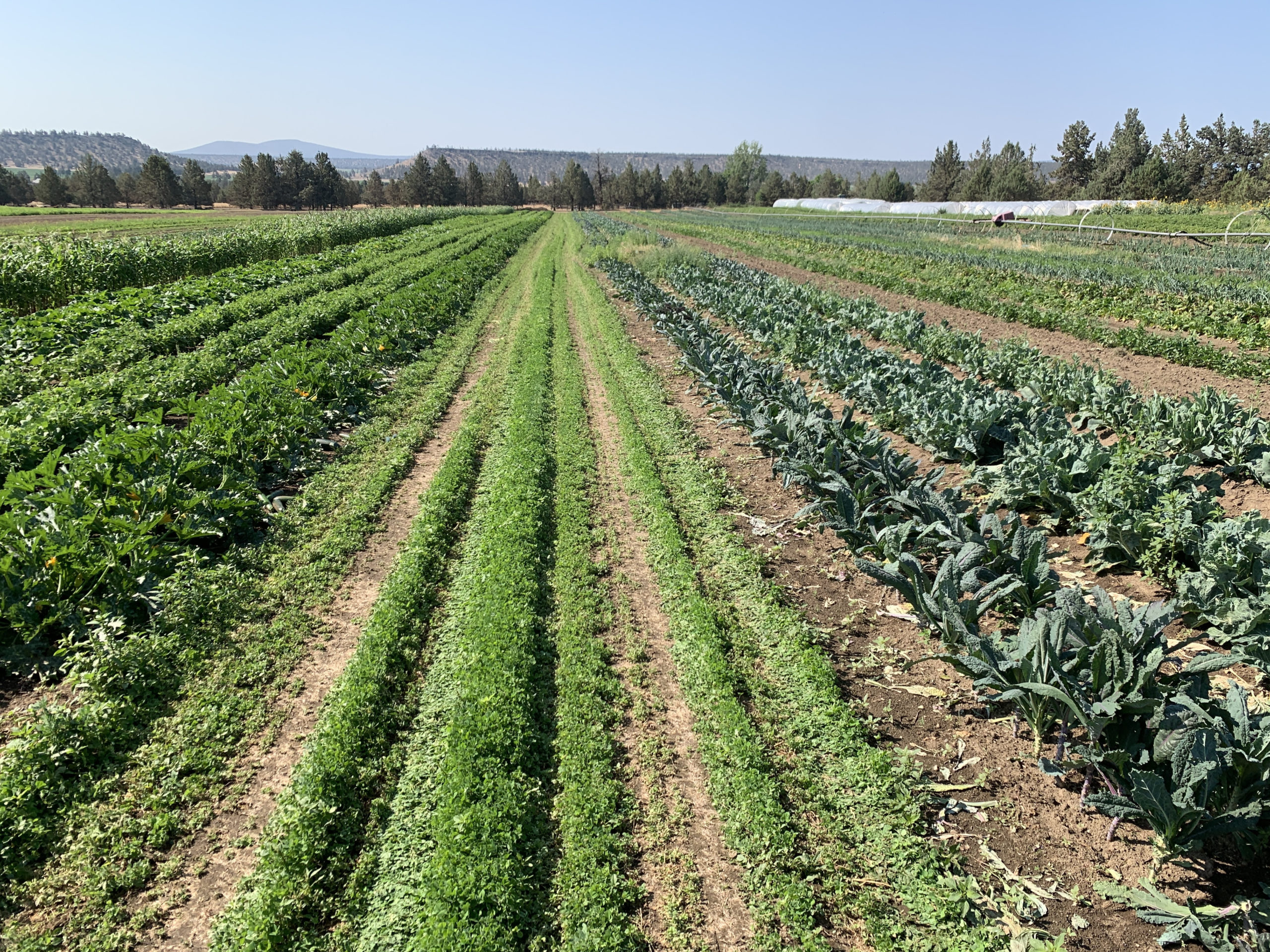
|
photo credit: Caroline Crews
|
Each of these early mornings was peaceful and beautiful, and our farmers agreed that this early hour was a special time to be out on the farm. One morning in particular stood out to me. We started this day in our 25-acre vegetable field harvesting kale. We like to harvest our greens first thing in the morning to protect them from the scorching sun, which can easily wilt a leafy green. At this point in the season, we spend the lion’s share of our time harvesting food from the plants we’ve been nurturing. We love growing good food to feed people, so there is little more satisfying than piling stacks of crates full of fresh, delicious produce onto the truck and sending it on its journey to your plates. But still, after spending so much time keeping a plant alive, supported, tended, fed, watered, and weeded, it is bittersweet to end it all with a single pluck or pull from the Earth.
On this morning, as I harvested kale, I found myself basking in the awareness that I was not only harvesting a plant, but I was also tending to it at the same time. When we harvest kale, rather than taking off all of the leaves or cutting the entire plant, we simply pinch off a few of the lower leaves, leaving behind the foliage surrounding the central leaf bud. Taking off the outer leaves gives the plant improved air circulation, helping the leaves absorb carbon dioxide and release oxygen for photosynthesis. By leaving the central bud and remaining leaves, the plant can continue producing more and more harvestable kale each week. When tended properly, these kale plants will continue providing us with delicious green foliage throughout the season!
As the yellow-tinged sky turned deep gold and the sun made its way over Smith Rock, bathing us and our bountiful vegetable field in golden light, I tended to our dinosaur kale plants by harvesting a few leaves from each plant. The world around me slowly came alive with chickens, turkeys, and songbirds clucking and chirping together, cows munching away at the cover crop, and a bunch of farmers in constant motion while harvesting our bounty. I felt an intense connection to this place and the plants before me in that moment, and I am excited for what the next week of sunrise farming will bring.
Take care, stay cool, and we’ll see you soon!
Caroline
Vegetable ID: Yod Fah |
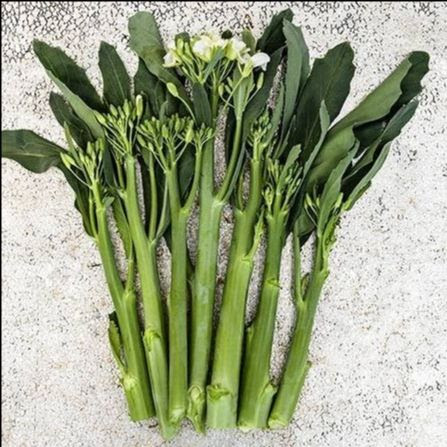
Basic Info: Yod Fah, also known as Chineses Broccoli or Sprouting Broccoli is 100% edible. It originates from Thailand and is full of very good for you things: 100% of your daily requirements of vitamin A and 50% of your daily vitamin C needs. Additionally, it includes protein and calcium. You should plan on eating the stems, flowers, and stalks. The leaves are like very tender kale and the tops that look like broccoli are buttery, soft, and slightly nutty. Yod Fah is reminiscent of both broccoli and asparagus.
To store: Store in the crisper either in a plastic bag or plan to use in a couple days.
To prep: You can cut into bite-size pieces or leave whole. Trim off any flowers that have started turning brown. Wash in a basin of cold water.
To Use: Yod Fah takes heat really well and is great in a stir fry or grilled. You can also treat it like the broccoli/asparagus vegetable it is a blanch and eat it with a vinaigrette or as an addition to a green salad.
|
carrots
kale
salad turnips
green onions
lettuce heads
arugula
broccoli
chard
green onions
kohlrabi
beans
patty pan squash
yellow summer squash
various herbs
beets
spinach
salad mix
zucchini
red radish
fennel
cucumbers
napa cabbage
yod fah (sprouting broccoli)
tomatillos
tomatoes
peppers (?)
| Keep an eye on our Instagram stories for a tour of what the options are on Wednesday around 11 am. |
|
|
Adapted from Six Seasons: A New Way with Vegetables by Joshua McFadden
Serves: 4
1 pound broccoli, stems sliced crosswise into ¼-inch coins and tops cut into florets
8 ounces rigatoni
1-pound Italian sausage
1 cup parmesan
3-4 cloves garlic
¼ cup breadcrumbs
½ cup whipped ricotta
¼ teaspoon dried chile flakes
Kosher salt and ground black pepper
Extra virgin olive oil
INSTRUCTIONS
- Shape the sausage into 4 balls, then flatten the balls like hamburger patties.
- Bring a large pot of water to a boil and add plenty of salt. Add the pasta and cook until just shy of al dente according to the packaging instructions.
- Meanwhile, heat a small glug of olive oil in a large skillet over medium heat. Add the sausage patties and cook until nicely browned on one side, about four minutes.
- Add the broccoli and sliced garlic to the skillet. Flip the sausage patties and keep cooking until the sausage is just about fully cooked, another 4 minutes or so. With a ladle or a measuring cup, scoop about ¼ cup of the pasta cooking water, add it to the pan and slide the pan from the heat.
- About 3 minutes before the pasta should be al dente, add the broccoli florets and cook all together until the pasta is ready. Scoop out another cup of pasta cooking water, drain the pasta and broccoli, and add to the skillet.
- Return the skillet to the heat. Add ¼ cup of the pasta water, the whipped ricotta, and half the parmesan. Season generously with salt and black pepper. Shake the pan to combine the ingredients, put back over medium heat, and cook for another minute or two to warm everything. Serve with more parmesan and top with breadcrumbs, if using.
Adapted from Ruffage by Abra Berens
1 small onion (or shallot or bunch of green onions)
2 garlic cloves, minced
salt and pepper
1/4 cup white wine
1 cup wild rice, soaked overnight in 4 cups water
1 bunch kale (about 4 cups), removed from midribs and cut into 1/4 inch ribbons
1 ball fresh mozzarella
1/4 cup sour cream
1 lemon, zest and juice
1 pint tomatoes, halved, or 1 to 2 large tomatoes chopped
INSTRUCTIONS
- Heat a glug of olive oil. Sweat the onions and garlic with the salt until translucent, about 5 minutes. Add the white wine and reduce by half. Add the wild rice and the soaking liquid and cook until tender, about 45 minutes.
- In a mixing bowl, sprinkle the kale with a pinch of salt. Massage the kale until it is dark green, limp, and tender in mouthfeel.
- Tear the mozzarella into rough chunks. Combine with the sour cream, lemon zest and juice, a good pinch of slat, and a couple grinds of pepper.
- When the rice is cooked, drain the liquid and let cool.
- Toss the tomatoes, kale, and wild rice together with a couple glugs of olive oil and a pinch of salt. Taste and adjust the seasonings. Dot with the mozzarella mixture and serve.
|
Chinese Broccoli with Garlicky Ginger Miso Recipe
Adapted from Steamy Kitchen INGREDIENTS
1 pound Yod Fah
2 tablespoons cooking oil 1 teaspoon grated fresh ginger 2 cloves garlic finely minced 1 teaspoon hot chili pepper minced (optional) 1 1/2 tablespoons miso paste 2 tablespoons water 1 tablespoon soy sauce 1 teaspoon Asian sesame oil INSTRUCTIONS
|
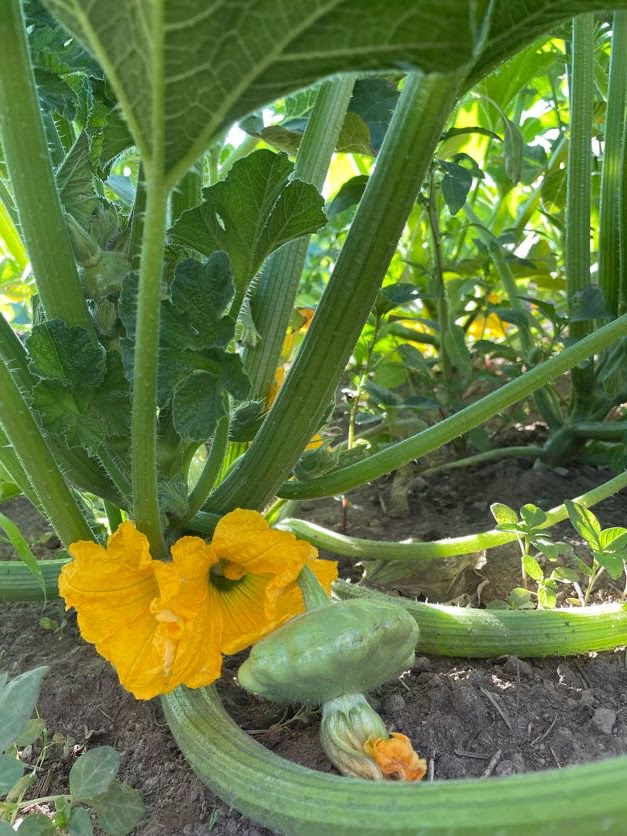
|
Photo Credit: Camila Becerra Riroroco
|
We can’t wait to see you on Wednesday!
The Farm Crew



